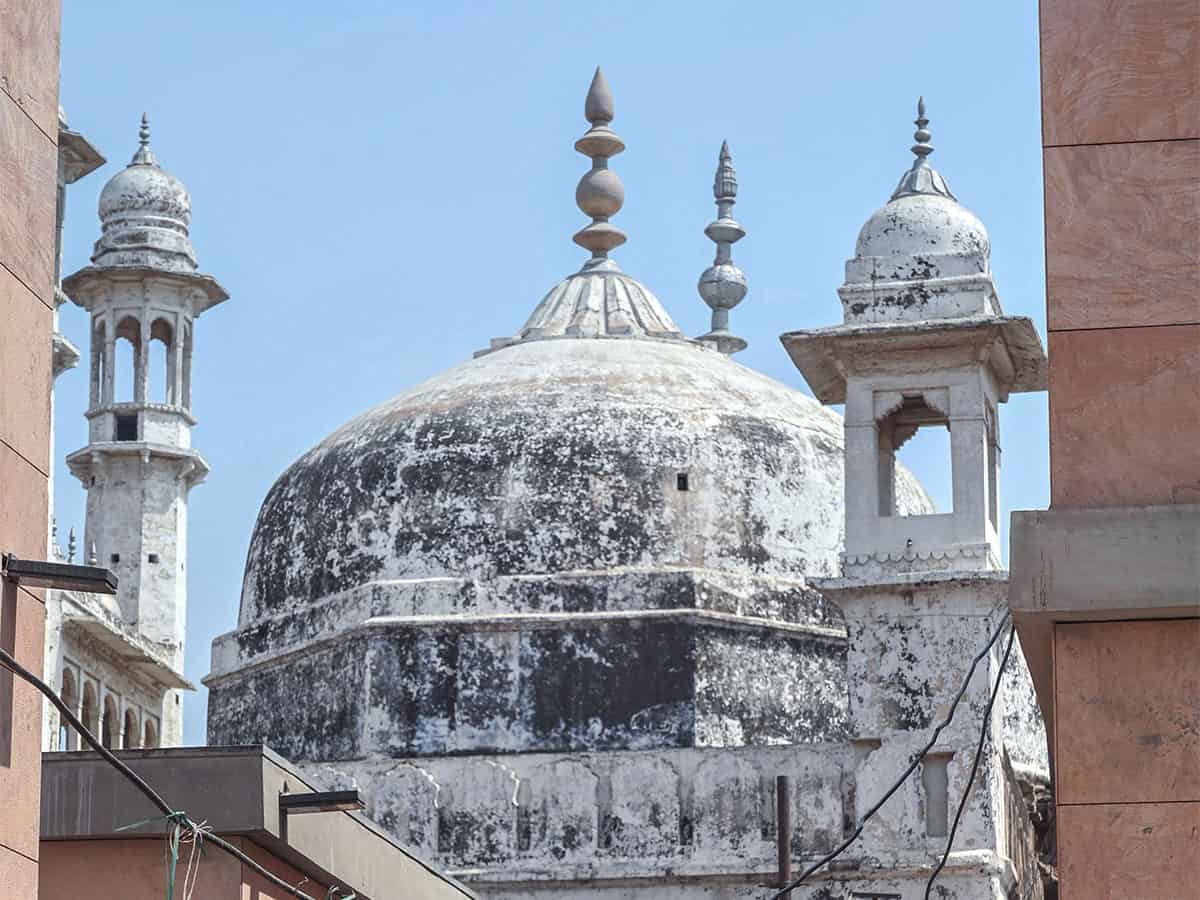
Lucknow: The All India Muslim Personal Law Board (AIMPLB) has refuted claims that the report of the Archaeological Survey of India (ASI), which conducted a scientific survey of the contentious Gyanvapi mosque premises in Varanasi and submitted the survey report in the district court earlier, found evidence of a Hindu temple there.
In a press statement, AIMPLB executive member Qasim Rasool Ilyas said that the report of the ASI is not “conclusive evidence” in this controversial case.
“By doing this the opposition party has created a feeling of anarchy and insecurity in the society,” he added.
Ilyas also accused the Hindu side of ‘insulting’ the court by releasing the ASI report in the media.
“Hindu communal organizations have been misleading the public for many years regarding the Gyanvapi Masjid. The latest example of this is a report of the Archaeological Survey of India which they filed in the court and made available to the plaintiff and defendant only on the orders of the court. This report was for their study and preparation but by publishing it in the press, the opposition party has not only insulted the court but has also tried to mislead the simple people of the country,” he said.
He also alleged that the Hindu side had tried its best to mislead the public and create unrest in the society months before when the survey team in its report had described the fountain present in the reservoir as Shivalinga.
“A few months ago, when the survey team in its report had described the fountain present in the reservoir as Shivalinga, the opposition party had tried its best to mislead the public and create unrest in the society by publicizing it, even though experts It could not be investigated nor did the court give any decision on it,” he said.
The AIMPLB, a leading organisation of Muslims in the country, is a non-government body constituted in 1973 to adopt suitable strategies for the protection and continued applicability of Muslim Personal Law in India, most importantly the Muslim Personal Law (Shariat) Application Act of 1937.
The Muslim side’s response came a day after the Hindu plaintiffs’ lawyer Vishnu Shankar Jain claimed citing the ASI report that there was evidence to prove that the Gyanvapi mosque had been built after demolishing a Hindu temple in the 17th century.
Jain claimed that ASI’s 800-page long report mention finding ancient scriptures in Kannada, Devanagari, and Telugu languages inside the mosque premises. The scriptures were about Rudra, Janardan and Vishweshwar, and that the pillars of the demolished temple were used to build the mosque.
The Varanasi court had on Wednesday directed for handing over the hard certified copies of the ASI report to the lawyers of the rival sides. Both Hindu and Muslim parties had sought copies of the ASI survey report.
ASI had submitted the report in two sealed covers last month in court. ASI, during the survey, started on August 4, used ground-penetrating radar and other scientific instruments to ascertain what lay beneath the surface of the Gyanvapi mosque premises.
The team also surveyed the inner and outer walls, the cellar and other parts of the premises barring the ‘wuzukhana’ (the place where Muslims perform ablution before proceeding to offer prayers).
The ASI report on the Gyanvapi mosque complex revealed that a pre-existing structure appeared to have been destroyed in the 17th century, and “part of it was modified and reused,” adding that based on scientific studies, it can be said that there “existed a large Hindu temple prior to the construction of the existing structure.”
The ASI also said the “western wall of the existing structure is the remaining part of a pre-existing Hindu temple”.
“The Arabic-Persian inscription found inside a room mentions that the mosque was built in the 20th regnal year of Aurangzeb (1676-77 CE). Hence, the pre-existing structure appears to have been destroyed in the 17th century, during the reign of Aurangzeb, and part of it was modified and reused in the existing structure. Based on scientific studies/survey carried out, study of architectural remains, exposed features and artefacts, inscriptions, art and sculptures, it can be said that there existed a Hindu temple prior to the construction of the existing structure,” the ASI said in its report.
“Based on the scientific studies and observations on central chamber and main entrance of the pre-existing structure in existing structure, western chamber and western wall, reuse of pillars and pilasters of pre-existing structure in the existing structure, inscriptions on the existing structure, Arabic and Persian inscription on the loose stone, sculptural remains in cellars, etc. it can be said that there existed a large Hindu temple, prior to the construction of the existing structure,” the report further said.
“In compliance of the order of the District Court, Varanasi, dated July 21, 2023, affirmed by the High Court of Allahabad by order dated August 3, 2023, and the Supreme Court of India by order dated August 4, 2023, the Archaeological Survey of India (ASI) carried out a scientific investigation and survey in a 2150.5-square-meter area fenced with steel grills in and around the existing structure (excluding the areas sealed by the orders of the Supreme Court). All the objects which were noticed during the scientific investigation or survey in the complex were duly documented. These objects include inscriptions, sculptures, coins, architectural fragments, pottery, and objects of terracotta, stone, metal, and glass,” the report said.
The ASI further noted that during the present survey, a total of 34 inscriptions were recorded and 32 stampages were taken.
The ASI in its survey mentioned that pillars from earlier temples were reused while making cellars in the eastern part of the platform.
“A series of cellars were also constructed to the east to create additional space and a large platform in front of the mosque for accommodating a large number of people for prayers. Pillars from earlier temples were reused while making cellars in the eastern part of the platform. A pillar decorated with bells, niches for keeping lamps on all four sides, and bearing an inscription of Samvat 1669 is reused in cellar N2,” it said.
“Sculptures of Hindu deities and carved architectural members were found buried under the dumped soil in cellar S2,” it added.
The survey of the Gyanvapi mosque premises began after the Allahabad High Court rejected the petition filed by Muslim litigants seeking a stay on the Varanasi court’s order for a scientific survey by the ASI.

